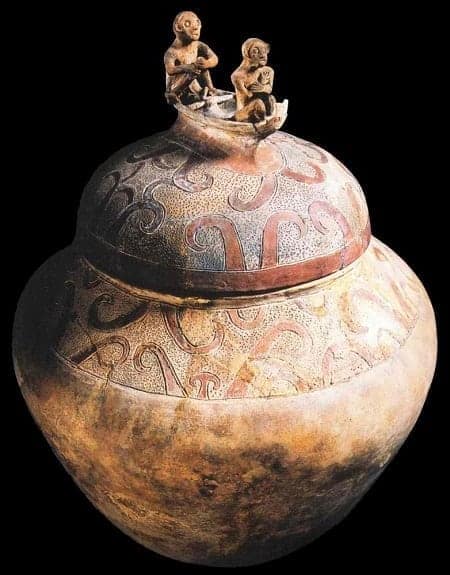The Manunggul jar was only one of several stunning artifacts discovered in Chamber A, Manunggul Cave in Lipuun Point, Palawan by a group of archaeologists who investigated the site from 1962 to 1965.


In addition to burial jars, they also recovered human remains covered in red paint and adorned with bracelets made of jade, shells, and stone beads.
Measuring 66.5 x 51.5 cms, the Manungggul jar is actually a secondary burial jar used to store the bones of someone who was previously buried. The lid features a “spirit boat” or “ship of the dead” carrying two souls on a journey to the afterlife.
The front figure–whose hands are folded across (a common practice in arranging the corpse during the prehistoric period)–is the passenger, while the figure in the back is the one guiding the journey, as evidenced by the now-missing paddle. Both figures are wearing a band tied over the crown of the head and under the jaw, a pattern that is still a part of burial practices of some indigenous groups in southern Philippines.
The body of the jar, on the other hand, is covered with a unique curvilinear design made of hematite or natural iron.
The Manunggul jar–dated to the Late Neolithic period (890-710 BC)–has a very intricate design that, in the words of archaeologist Robert B. Fox, “is perhaps unrivaled in Southeast Asia, the work of an artist and a master potter.”read more..